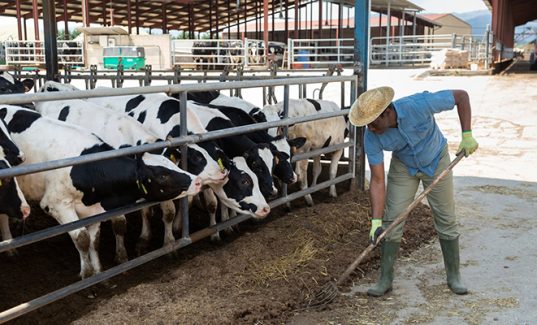China’s mega-dairies need a consistent supply of feed, consistent output of milk and consistent input of Australian heifers.
Holsteins Australia chief executive Graeme Gillan said Chinese dairies, a big importer of Australian heifers, “tried to have everything the same all the time”.
“They aim for an average amount of milk, so they need a consistent supply of heifers.”
Mr Gillan, who spoke at a Total Livestock Genetics forum in Kyabram last week, said Chinese importers were becoming more focused on genomic testing and importing quality dairy cows.
“They’re not simply importing our surplus or poorer quality cows,” Mr Gillan told The Weekly Times.
“If a dairy farmer in Australia has a herd of 2000 then they might be selecting their best based on daughter fertility, then their surplus cows might be highly productive.”
Mr Gillan said in the past there might have been concerns about poorer quality Australian cattle being sent to China.
“Originally there was a risk,” Mr Gillan said.
“But now the guys buying the cattle are more discerning and have created business models around it.”
Mr Gillan said genomic testing was important in selecting which animals to keep and which ones to export.
“Genomic testing allows us to make good decisions earlier,” he said.
“In comparison to one farmer I know who would run his yearlings through a gate and the last 20 per cent through the gate would be culled.”
Mr Gillan said the cull cow price in Victoria was high last year, leaving fewer cattle to be exported to China.
He said China was the dominant player while Vietnam was increasing its orders and Indonesia was likely to enter the market.
“Indonesia had rules imposed on it from FIFA to play in the World Cup and they said no. But when it came to feeding their people, they were happy to make changes that were different to what they have historically done.”
He said there were promising signs with Sri Lanka seeking to fill an order for 6000 cows, while Japan was also ramping up its buying.
Source: The Weekly times




